I took a very informative class led by Sake Samurai Timothy Sullivan just before a large Discover Sake LA tasting event recently. Sullivan promised to give us the strong points of selling and enjoying Sake in stores and restaurants, and how to make it more understandable to the consumer and profitable for the sellers.
Sullivan’s journey into Sake began in 2005 when, on a whim, he ordered the most expensive Sake by the glass at a restaurant in New York. From that moment it became a huge hobby. With a computer background, he started UrbanSake.com, which now has years of tasting notes, including a database of 600 sakes so far, making it a great website for research.
In 2007 Sullivan was invited to Japan by the Sake Brewers Association to become a Sake Samurai. The goal of the association is “To Promote Sake” throughout the world. He then returned to New York and began teaching. He also did brewing internships and quickly learned that he was more skilled at teaching instead of brewing. However, learning the brewing process was a good experience to know the passion involved in making sake.
Sullivan now has other certifications in Sake education, and in 2013 he became a brand ambassador while he continues to teach about sake. This is what I learned:
Sake is not:
- Wine, as it’s not made from fruit it’s milled from a grain.
- Beer does come from a grain, and it’s fermented, but sake is not from barley or uses hops for flavoring.
- Spirits are from fermented fruits, grain or vegetables.
Sake is:
Its own category! Sullivan is an advocate of educating people to learn and promote this. It is fermented from the sugars in rice alone.
The Four Sake Ingredients:
- 80% water, and the breweries are usually close to their water source.
- Yeast to consume sugar and give off CO2 and alcohol. Will control the result of little to no aromas.
- Koji is the mold that is purposely made on the rice, to give off an enzyme that snips starch molecules into sugar molecules. Allows for the breakdown of starch into sugar. It is considered the “heart” or “center” of sake brewing.
- Grains of sake rice are pudgier then table rice, and starch is more concentrated in the center of a grain of sake rice. Like the yolk in a hard-boiled egg. So brewers can grind/mill/polish down the outside to get to more of the starch center. The amount remaining is the part we refer to, and the part used for making sake.
In a restaurant there are several sake classification terms. (See “Sake Types” photo). There is pure (milled rice) and fortified (with up to 10% distilled alcohol). It’s the different milling rates that give classifications.
Why Sell Sake?
- The quality of sake, which has been around for about 2000 years, has never been better. The last 40-50 years premium sake has become more elegant, floral, aromatic – and of the best quality.
- Unique amino acid profiles provides more savory flavors. Sullivan said it was more like the savory qualities found in a Shiitake mushroom, Parmesan cheese or very ripe tomatoes.
- When a sommelier may have a difficult food and wine pairing, sake can fill the void.
- Variety of brands and styles.
- There has been a rising demand for sake every year.
Challenges for Sake in the U.S.
- Price is higher in the states than it is in Japan.
- Labels “scare” off people as they are hard to read or hard to remember. Brewers will now sometimes integrate some English in the design.
- General lack of understanding and education. Customers may have a knowledge deficit about, for instance, “all sake is hot sake”, “it’s rice wine” and/or “high alcohol” so the consumers need a lot of education.
- The “Only-With-Sushi” image that Americans have. It’s a red or white conversation, never a sake one if the consumer is going home to cook a dinner as they don’t know how to pair their home meals with sake. Introducing sake to non-Japanese restaurants is going to be the next huge area. Not a lot of work done in that and nothing, according to Sullivan, can help the market more than changing this image.
Selling Sake
- Number one is staff education. You must train staff about sake to sell sake. This is the front line and they need to be passionate sake ambassadors and sake fans.
- “Rock solid pairing recommendations.” Creamy cloudy sake with spicy pad Thai being one example. Gamey sake with Thanksgiving turkey. Robust sake with shiitake mushroom dishes.
- Labeling, messaging and menus shouldn’t be complicated. Don’t “geek out” instead make tasting notes easy to understand. Shy away from numeric ratings, it’s not something needed in the sake world like it’s taken over the wine world. Don’t go overboard on information and education in a menu, but have on hand for that one customer that wants to know.
- Consider giving out sake samples. Removes fear of the unknown.
- Bottle size could be 1.8-liter “party size” large format as it’s nice to serve by the glass. Sake is more robust than wine after opened, can be kept in refrigerator for 2-3 weeks, and a vacuum seal can be used. The alcohol in the sake serves as a preservative.
Quick Tasting
Hideyoshi Honjozo
Milled to 65% or less rice remaining, fortified with a small amount of alcohol. Tasted like most cold sake offerings in average corner sushi bars.
Mizunoshirabe Ginjo
Milled to 60% or less rice remaining, fortified. This one was slightly lighter and cleaner.
Kirinzan Junmai Daiginjo
Super premium, 45% rice remaining. Dryer. I liked this one. The more rice you mill down the price gets higher – but you get more aromatics and smooth palates.
Dassai Sparkling Nigori 50
Cloudy. Milled to 50% rice remaining. Fruity. Interesting. I would suggest trying this in place of your usual sparkling wine; I liked it.
Yuzo Omoi
Japanese citrus, low alcohol, high acidity, 60% rice remaining. Wow, what a burst of lemon and orange! Really interesting.
The room was a wee bit crowded to me, and I wasn’t on a mission to drink too much before I thought about driving. I tried some of the super premiums, and some infused with citrus or other fruits.
All in all I thought of what I had just learned in the class: Yes, these bottles had more English then in the past, but they also had unique art and shapes. For people that buy their wine based on a pretty label, I thought they did a swell job. And, as I tried a few sweet ones, I thought that people that enjoy sweet wines would really like this offered in a restaurant instead of a dessert wine.
My eyes are more open to sake now, and I’m very anxious to seek out more different types. Least of all: hot sake. I haven’t had it in years and don’t miss it at all. If you never liked hot sake, know one thing: These sakes are completely different.
###
From JETRO Invite
JETRO is pleased to announce the Discover Sake tastings in Los Angeles. We have gathered a premiere selection of thirty sake brewers from Japan to share their finest bottles, with the importers that bring their sake to you…
Consumers are becoming more and more knowledgeable about premium sake, and labels from Japan have started appearing next to wines and craft beers on menus in all kinds of restaurants. From honjozo to daiginjo to nigori, our producers will showcase a range of sakes that can fit into any beverage program.
BREWERS INFORMATION
– NANBU BIJIN CO., LTD. (Iwate)
We were established in 1902, first as a sake retailer, then as a producer. Nanbu stands for the region, and Bijin (meaning beautiful woman) for the delicate, light, and clean nature of our sake. Our sake is brewed with medium-hard water that is purified naturally as it courses through the mountain rock on its way to the sea. We are now available and enjoyed by our fans in over 20 countries, including the United States, United Kingdom and the UAE.
Available through: Mutual Trading Inc. [www.lamtc.com]
– HANAHARU SHUZOU CO., LTD. (Fukushima)
For 300 years, we have continued to brew sake in Aizu, Fukushima, a region known for its high-quality rice. Along with the region’s abundance of pure, clean water, this rice is essential to the production of excellent sake. Its climatic feature of having four distinct seasons with heavy snowfall and cold temperature is also a significant factor to sake brewing.
– NINKI.Inc (Fukushima)
Established by a group of true professionals in Fukushima that have succeeded in the sake industry, we pride in making “Ginjo” sake only, concentrating on producing high quality sake, as well as offering a special touch of sophistication and style to our bottles and labels.
Available through: Silkroad Wine & Spirits [www.silkroadwineandspirits.com]
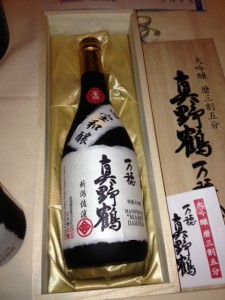

– OBATA SHUZO CO., LTD. (Niigata)
Obata Shuzo has been hand-making boutique premium sake since its founding in 1892, using pure, soft groundwater and world-famous sake rice. The kura (brewery) is still owned and managed by the Obata family. The toji (master brewer) is the acclaimed Kenya Kudo.
The Obata family crest is Four Diamonds. These represent the three elements that are commonly held to be crucial in sake brewing: “Rice,” “Water” and “Humans” (Brewers). In addition to the aforementioned three, the brewery takes into account the importance of “Climate and Nature” (Terroir). Their motto is to brew sake where the “four treasures” may work harmoniously to produce a well balanced product.
– SHIRATAKI SAKE BREWERY CO., LTD. (Niigata)
http://jozen.sakura.ne.jp/english/
In 1855, Tosuke Minatoya founded the brewery at Echigo Yuzawa in Niigata prefecture. Echigo Yuzawa is famous for heavy snowfall and hot springs. When the snow melts, it becomes a waterfall, and high quality clean water gushes from the well in the brewery facility throughout the year. Japanese sake is 80% water, and the spring water plays an essential role in brewing. Shirataki sake has complex aromas, and is delicate, smooth and soft on the palate.
Available through: Nishimoto Trading Co., Ltd. [www.ntcltd.com]
– NIIGATA MEIJO CO., LTD. (Niigata)
Niigata Meijo is located in Ojiya in the central region of Niigata Prefecture 150 miles north of Tokyo. A fertile valley for rice farming surrounded by snow-covered mountains in winter, the environment is ideal for sake production. The company’s brewery has produced sake and distributed other wholesale beverages for 70 years.
Niigata Meijo sake products have received major awards including the best sake award at the Kanto Regional Sake Appraisal and 13 consecutive gold medal awards at the National New Sake Appraisal. Its sake has a characteristic gorgeous-smooth-clean flavor profile with clear finish, and one of the products in a small cup package (180ml) received the Grand Prix award of Japan’s Cup sake in 2008.

– ICHISHIMA SAKE BREWERY INC. (Niigata)
Long one of the most prominent breweries in the Niigata region, Ichishima Shuzo has been owned and operated by the Ichishima family since its founding in 1790. The brewery continues to draw on its long history and access to local ingredients to produce some of the highest quality sake in a region known for premium production. Despite its history and tradition, however, the brewery is no stranger to innovation. By managing to maintain tradition as well as an open mindedness, Ichishima Shuzo has been able to produce consistently high quality sake, as evidenced by its perennial status as a gold medal winner at the National New Sake Competition.
Available through: MJS Sake Selections [http://mjssake.com/]
– KANEI BREWING LTD. (Kanagawa)
Hadano is known for its excellent water, and the Kanei sake brewing company takes advantage of this water to make its excellent and highly acclaimed lines of sake. The brewery has been producing its handcrafted sake since 1868.
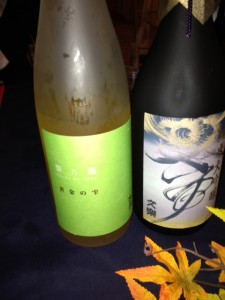
– BUNRAKU CO., LTD. (Saitama)
Throughout over a century of history we have striven to offer the highest quality sake to our customers by strictly maintaining our ancient, traditional methods. The autumn of 2007 saw the completion of our new brewery, allowing us to harmonize traditional brewing methods with modern equipment. It is therefore with great pride that we seek to introduce our treasured sake to people from overseas. Having put our heart and soul into sake for over one-hundred and ten years, we can promise that our product will not be a temporary fad, but it embodies a genuine and superior element of Japanese tradition.
Available through: Wine of Japan Inc. [http://www.wineofjapan.com/]
– SHIRAGIKU SHUZO CO., LTD. (Ibaraki)
http://www.shiragiku-shuzou.co.jp/
Founded in 1805, we have continued to produce high quality sake with the use of a steam engine. Now, with the traditional technique of Kanzukuri (sake made in winter when the air temperature is low), we are able to produce sake that is light and soft on the palate.
– SHOUTOKU BREWERY CO., LTD. (Kyoto)
Founded in 1645 in central Kyoto, Shoutoku contains all the pride of its 400 year history. We proudly serve sophisticated handmade sake brewed according to the Japanese traditional method called “Junmai-Ginjo”. Special attention is paid to three factors: Use of 100% Japanese rice, pure water, and the Japanese traditional method of brewing. This process strictly prohibits the use of any additives, other types of alcohol, or sugar. Now we also have a new type of fresh citrus flavor, yuzu sake, which has become popular among our fans.
– MASUDA TOKUBEE SHOTEN CO., LTD. (Kyoto)
http://www.tsukinokatsura.co.jp/
Established in 1675, Masuda Tokubee Shouten is owned by its 14th generation and it has the longest history in Fushimi, Kyoto. It is known for developing the first sparkling Nigori-sake (cloudy sake) and for a junmai daiginjoshu aged for 47 years. We also hold significant value in the purity of rice, hence, 100% organic rice is farmed in our rice paddy.
Available through: The Japan Prestige Sake Association [http://www.meimonshu.jp/modules/xfsection/article.php?articleid=1335]
– KANAYA SHUZOUTEN CORPORATION (Ishikawa)
http://www.hakusan-takasago.jp/
Founded in 1869. We have since long ago contributed to the development of sake as one aspect of the culture of cuisine. While treating with importance the craftsmanship and techniques passed on across generations, we have done our utmost to improve our brand.
– ASAHISHUZO CO., LTD. (Yamaguchi)
Over the past few years we have adapted our methods and our brewery to be able to brew year round, something all but unheard of in the sake industry. Our sake is produced by a careful combination of tradition and cutting edge technology, focusing on quality and not quantity. We pride ourselves in creating great sake like no other, sake that is the pinnacle of refined elegance, subtlety, and delicate flavors and aromas.
Available through: Mutual Trading Inc. [www.lamtc.com]
– YONEDA SAKE BREWERY (Shimane)
TOYONOAKI is the best supporting actor on the table.
We here at Yoneda Sake Brewery take great pride in the sake we make. We carefully choose all of the ingredients that go into it, particularly the rice and water, two items which are of abundance in Shimane. Thus it is also a point of pride that we make our sake using high quality local products. The name of our brewery, Yoneda, is written using the characters for “rice” and “field”, so even our name has a special relationship with the sake we produce.
NIIGATA SAKE SELECTIONS
– MUSASHINO SHUZO CO. LTD. (Niigata)
Established in 1916, our sake is made of regional high quality rice and pure snow water, which are both essential ingredients in producing excellent sake. Being blessed with Niigata’s climate, rice and water, we won the highest point for the Niigata competition among the region’s 80+ producers in March of 2005.
Available through: Hosoda Brothers [www.hosodabros.com]
– KIRINZAN SHUZO CO., LTD. (Niigata)
KIRIN-ZAN sake is synonymous with the Niigata style – light, dry, pure and well-refined taste with clean finish, which is often referred to as “Tanrei Karakuchi.’ To ensure the best quality of rice for the product, the toji (brew master) and his team members works in the local rice fields in the summer months and brews the rice he has cultivated in the fall.
Available through: Hosoda Brothers [www.hosodabros.com]
– KIMINOI SHUZO CO., LTD. (Niigata)
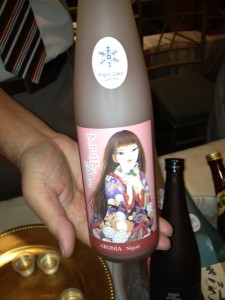
Kiminoi Shuzo was founded in 1842. The master brewer at Kiminoi uses the traditional “yamahai” method of preparing the yeast starter for the fermentation process. This ancient and labor intensive production method creates a deep, rich and full bodied sake.
Available through: Hosoda Brothers [www.hosodabros.com]
– KINSHIHAI SAKE BREWERY, INC. (Niigata)
Established in 1824, we have been producing the finest sake using the region’s “Tengu Spring Water.” Niigata’s snowy climate gives the perfect conditions for yielding the highest quality sake possible.
Available through: Hosoda Brothers [www.hosodabros.com]
KURAMOTO USA
– ASABIRAKI CO., LTD. (Iwate)
Gold Medals at the National Sake Competiton 18 times in row. Our brewing Master has honor of winning medals 18 times in row at the National Sake Competiton held in spring every year, which has not happened in the past. We can proudry say it is because our cotituous efforts of everyday work for 142 years.
– SUEHIRO SAKE CO., LTD. (Fukushima)
http://www.sake-suehiro.jp/top.html
Founded in 1850, Suehiro Sake has been a family owned business for eight generations. Suehiro’s sake is famous throughout Japan and annually wins domestic and international awards. Their premium sake is produced using the traditional “Yamahai” method which utilizes slow open-fermentation to produce a full, complex flavor, as well as the high quality rice, pure water and people of Aizu.
– YAMAMOTO HONKE CO., LTD. (Kyoto)
Located in the ancient capital of Japan, KYOTO, the first Genbei Yamamoto established Yamamoto Honke in 1677.Since then, we have been brewing sake to enrich people’s lives with the best quality for over 300 years and 11 generations. Benefiting from the soft, rich spring water from the surrounding mountains, our sake intrigues the charm and elegance in its style. We hope to make each course of your meal delightful with our delicately brewed sake.
– YAMAGATA HONTEN (Yamaguchi)
http://www.oboshi.co.jp/kuramoto/yamagata/
Established in 1875. In Tokuyama, a historical town of Shunan in Yamaguchi Prefecture, our brewer has been creating a unique sake culture and sending it to the world.
– CHIYOMUSUBI SHUZO (Tottori)
Using the brewery’s rice named “Goriki”, “Yamadanishiki” and ”Gohyakumangoku”, grown up in our hometown “Tottori”. Luxurious aroma and rich flavor are aimed at for our sake.
ASPEC
– AKITA SEISHU CO., LTD. (Akita)
http://www.igeta.jp/english/index02_e.html
Dewatsuru Brewery is Located in a mountainous area in the southern part of Akita Prefecture.The mountains surrounding the brewery are called Dewa Hill,the souce of rich and clear spring water.In the same way that Akita’s four seasons and humid climate perfectly suit the cultivation of rice,it’s heavy snow\falls and winter tenperatures areperfectly suited for brewering sake.
Available through: Akita Seishu Co., Ltd.
– HINOMARU JOZO CO., LTD. (Akita)
http://hinomaru-sake.com/english-top/
Inheriting traditional methods over 320 year old, we continue refining sake based on our mottoes of “Quality First” and “Challenging Spirit,” focusing on customer satisfaction with the taste of our sake.
– NABA SHOTEN CO., LTD. (Akita)
Located near Tsuchizaki harbor in Akita City, one of the largest ports of northern Japan, Naba Shoten has been a local favorite since it was started in 1815. In honor of the fishermen and other inhabitants of the port, who have been the brewery’s most loyal customers, we produce sakes that pair extremely well with the grilled and fried seafood commonly eaten in the area.
– TENJU SHUZO CO., LTD. (Akita)
Founded in 1874, Tenju Shuzo is a tightly knit, family-owned brewery enjoying its sixth generation of sake production. Tenju brewery avails itself of the nature that abounds in the nearby terrain in Akita. We use Mt. Chokai’s naturally-filtered, soft water, which results in its distinguishably clean finish on the palate.
Available through: Winebow Inc. [www.winebow.com]
– SUZUKI SHUZOUTEN (Akita)
http://www.hideyoshi.co.jp/index1.html
Founded in 1689, the second year of Genroku period (1688~1704). It has been more than three hundred years since we started making sake. We have been focusing on its quality, and devoting ourselves to succeed its traditional palate. Our sake brand, Hideyoshi, was named after we received the highest possible compliment from the Lord Satake of the domain of Akita in Kaei period (1844~1853).
Available through: Winebow Inc. [www.winebow.com]



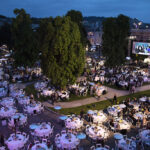
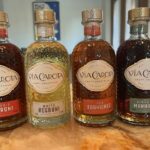

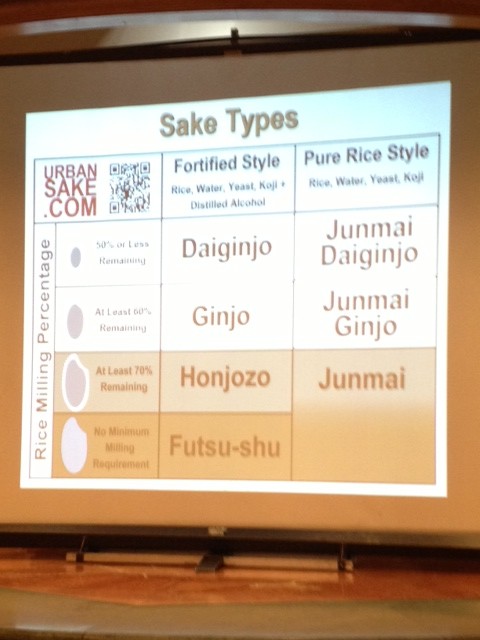
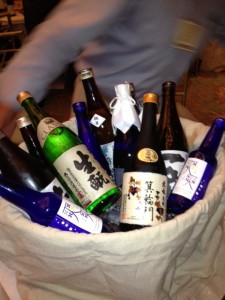


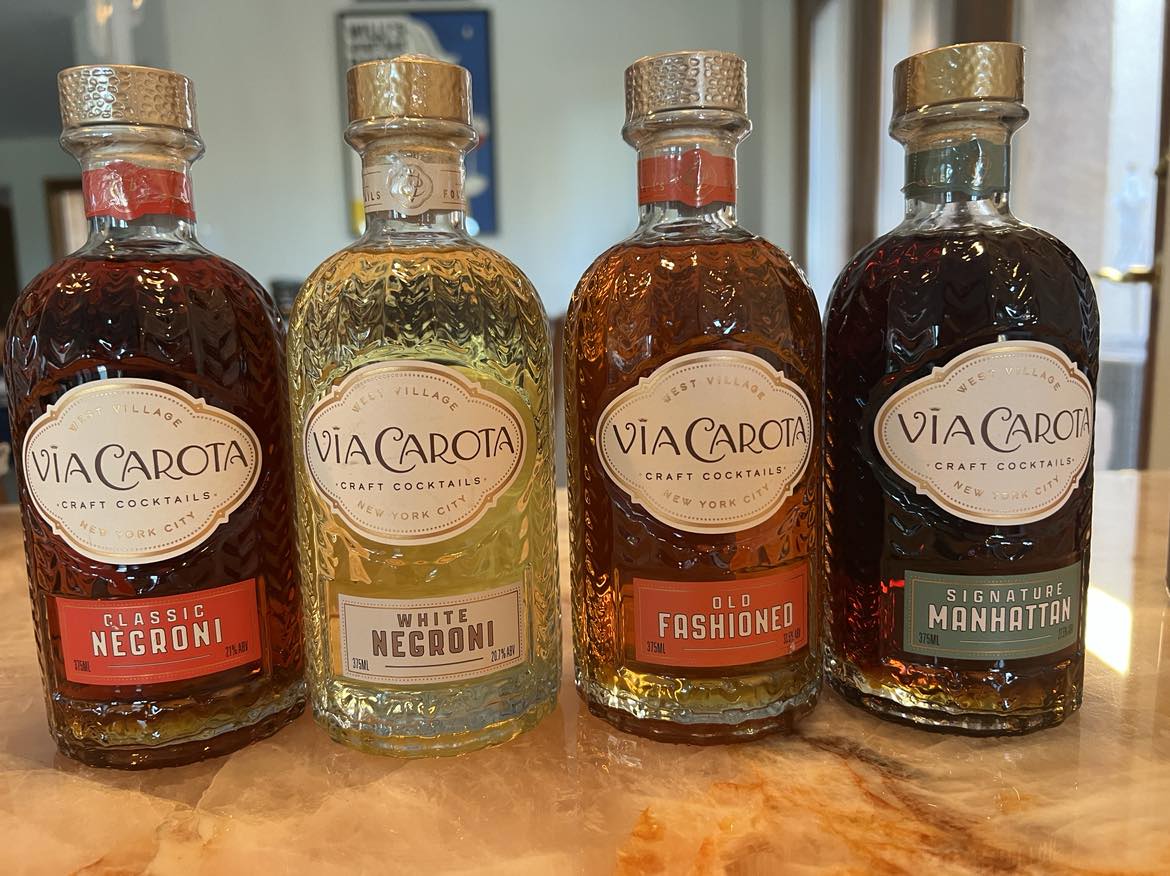
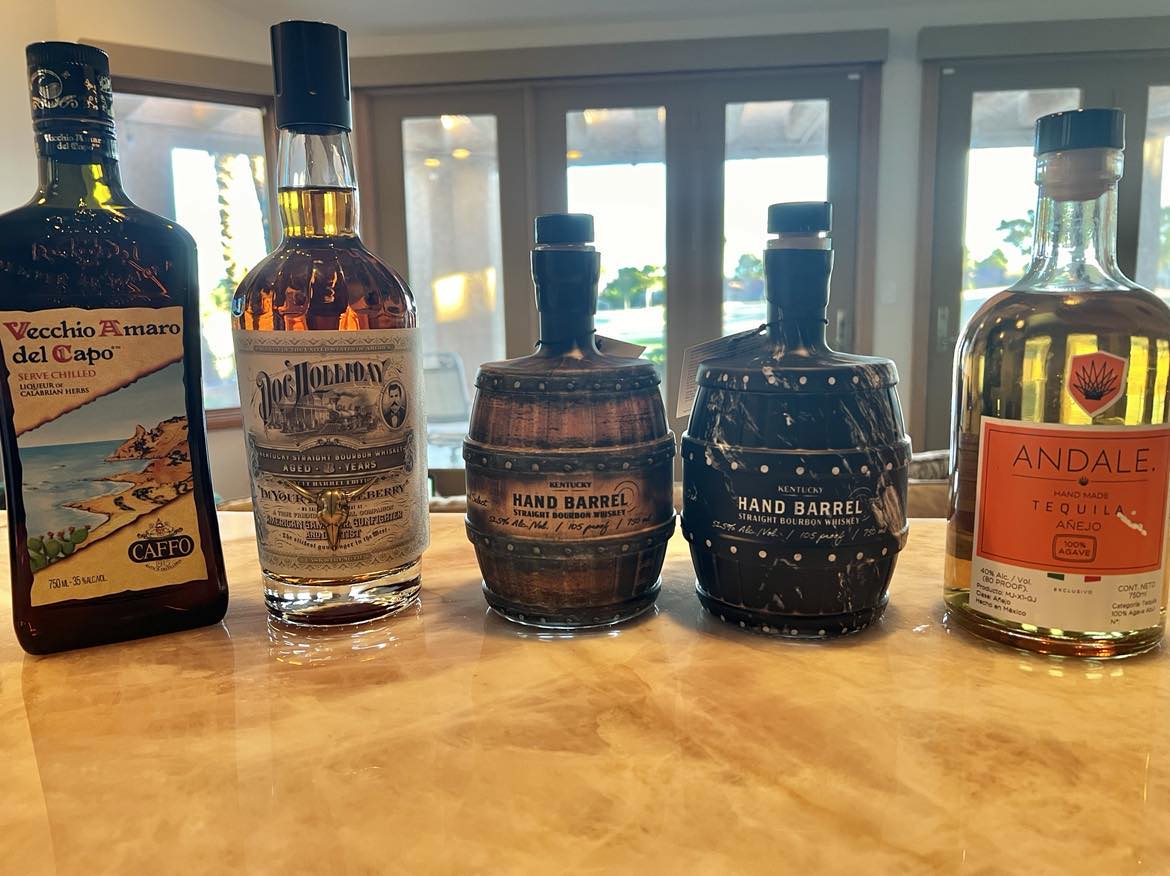
Thank you Greg. Trying to stick to our wine 101 roots. I remember the first time I had a cold sake and it was like an entire new sake-world opened up. So many wine beginners, or sake beginners I should say, stop with hot sake and give it little regard. Hoping some will give cold a try!